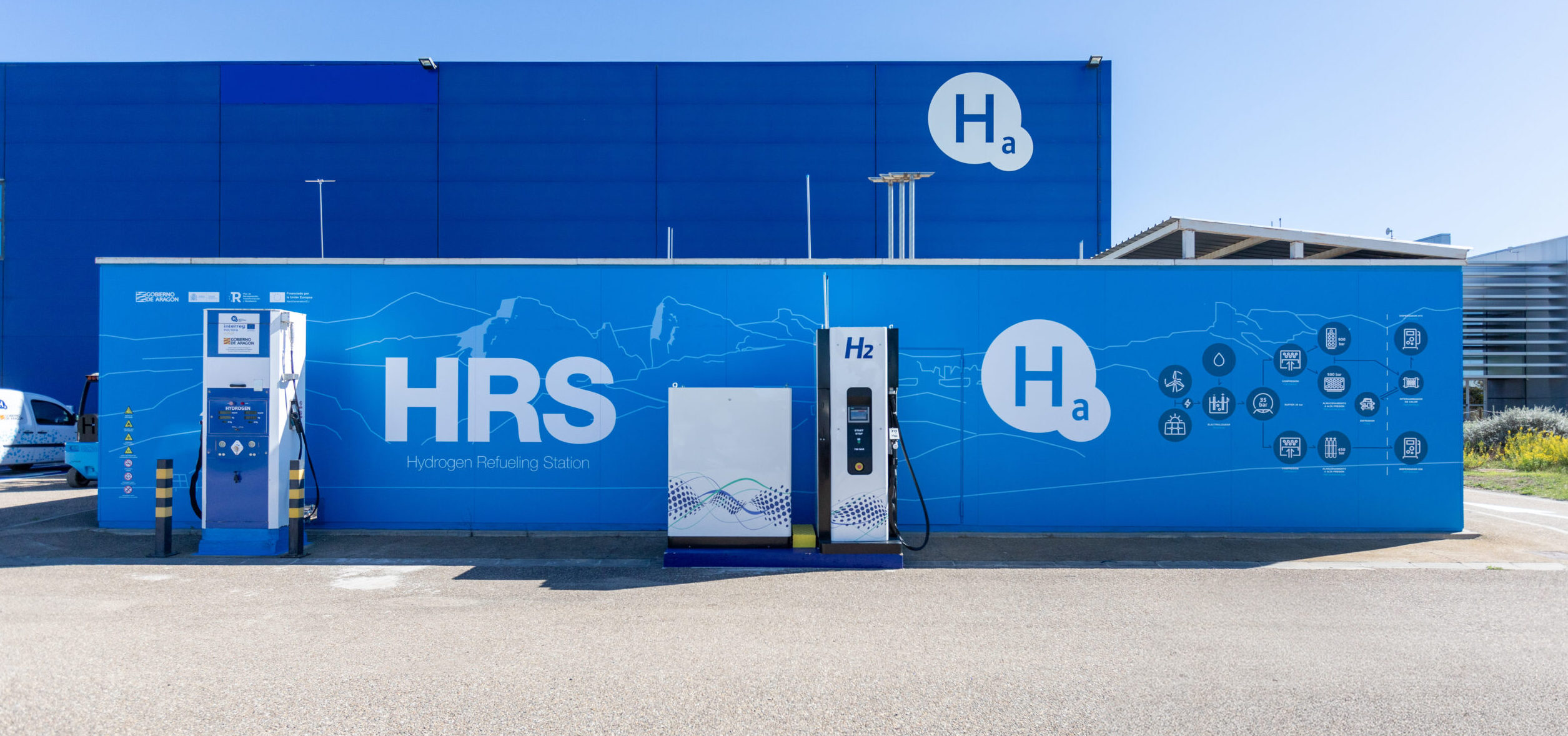Green hydrogen drives innovation in Aragon
In Aragón, the Complementary Plan for Renewable Hydrogen Energy (2021-2025) involves the participation of the Aragón Technological Institute (ITA) as coordinator, the Aragón Hydrogen Foundation, and the University of Zaragoza (Unizar).
This week, the initiative has been featured in Heraldo de Aragón. We highlight the words of María García Camprubí, scientific coordinator of ITA, who emphasizes that the goal is “to generate scientific-technical knowledge for the deployment of green hydrogen technologies aimed at the decarbonization of heavy transport and industry, covering the entire value chain.” The plan focuses on three specific areas: hydrogen generation, storage and supply, and final use in heavy transport or industry.
More pressure, greater autonomy
The Aragón Hydrogen Foundation is adapting the hydrogen refueling station to increase the supply pressure from 350 to 700 bars. According to José María Santa Bárbara, our Managing Director, “more pressure implies an increase in the autonomy of light vehicles and hydrogen cars. Working at 700 bar, a car can travel more than 600 km per refueling.” Additionally, refueling is done in just 5 minutes. The goal is “to have a service station that functions as a laboratory to understand in a real environment how a hydrogen vehicle refueling station operates.”
Regarding the production of renewable hydrogen through low-temperature electrolysis, “currently, the equipment of different electrolysis technologies is integrated into the same network and generating hydrogen through the combination of renewables available at the Aragón Hydrogen Foundation (wind and photovoltaic).” The hydrogen station is the main consumer of the generated hydrogen and acts as a means to determine the optimal operation of the multi-generator system. “This allows us to understand which type of hydrogen production technology is optimal based on the amount and type of available energy, and to select the appropriate type of electrolyzer depending on the application and environment.”
Periodically, the different autonomous communities that are part of the Plan – Aragón, Asturias, Canary Islands, Cantabria, Castilla-La Mancha, Castilla y León, Extremadura, Madrid, Navarra, and the Basque Country, along with the CSIC and the Iberian Center for Energy Storage Research (CIIAE) – meet to share advances and knowledge generated within the project framework. This week, on May 13 and 14, a meeting of the Complementary Plan for Renewable Hydrogen Energy is taking place in Extremadura.
This initiative is co-financed 65% by the Recovery and Resilience Mechanism, framed within the Recovery, Transformation, and Resilience Plan financed by the European Union, and the rest by funds from the autonomous community of Aragón.



